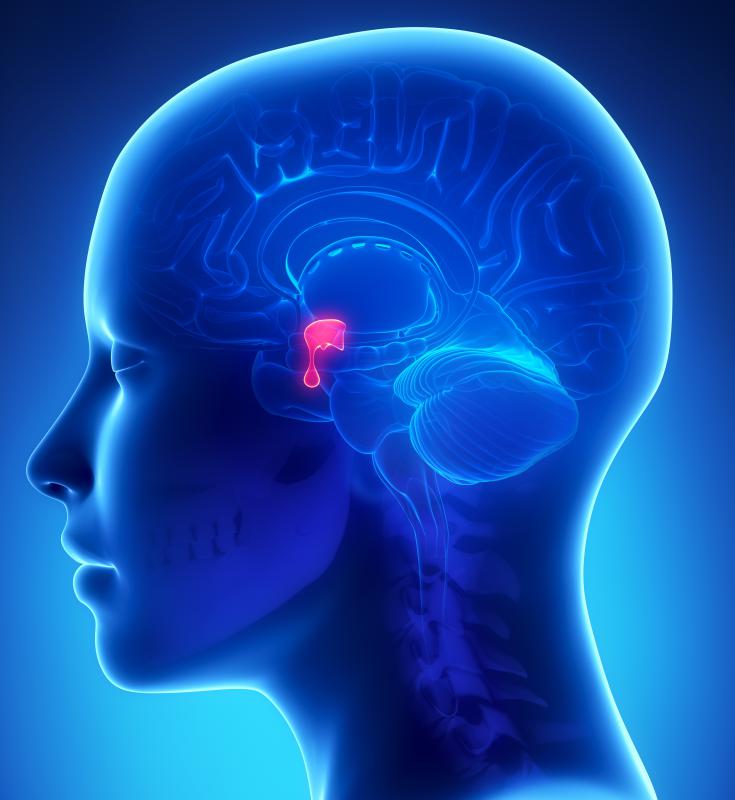At WiseGEEK, we're committed to delivering accurate, trustworthy information. Our expert-authored content is rigorously fact-checked and sourced from credible authorities. Discover how we uphold the highest standards in providing you with reliable knowledge.
What Is the Connection between Luteinizing Hormone and Follicle Stimulating Hormone?
Luteinizing hormone (LH) and follicle stimulating hormone (FSH) are both gonadotropins that are created by the pituitary gland's anterior section and regulate secretion of sex hormones in order to modulate female ovulation and male sexual development; so closely linked are they that LH and FSH are often secreted by the exact same cells in the gland. The two hormones are also both glycoproteins and have a similar structure: they are both comprised of alpha subunits and beta subunits. Another connection is that luteinizing hormone and follicle stimulating hormone carry out their duties by triggering the actions of second messengers once they bind to cell receptors in the gonads.
Being gonadotropins, luteinizing hormone and follicle stimulating hormone are messengers that trigger gonads to release estrogen and testosterone and to complete specific reproductive functions. In the case of females, FSH causes the ovaries to secrete the sex steroidal hormone estrogen and guides maturation of egg follicles; once a follicle is fully mature, an LH surge causes that follicle to release an ovum as part of ovulation. LH and FSH stimulate this ovulation process every 28 days; the ovum can either be fertilized by sperm for reproduction or be excreted during a woman’s menstrual cycle.

Contraceptive methods, such as birth control pills, leverage luteinizing hormone and follicle stimulating hormone to manipulate ovulation and avoid pregnancy. Since production of LH and FSH is dependent on sufficient levels of estrogen in the female body, the birth control pill successfully impedes pregnancy by suppressing the levels of estrogen in the body. At low estrogen levels, neither LH nor FSH will be produced by the pituitary gland, thus restricting the formation and maturation of an egg.

While predominantly known as female reproductive hormones, luteinizing hormone and follicle stimulating hormone are both crucial in male reproduction because they send messages to cells in the testes. In males, LH influences Leydig cells to create and release testosterone, a key male hormone that guides development of the prostate and of masculine characteristics, such as body hair growth and muscle growth. FSH, meanwhile, influences the production of sperm by triggering Sertoli cells to create androgen-binding proteins. These proteins then bind to testosterone and other hormones to generate sperm.

When the levels of luteinizing hormone and follicle stimulating hormone decrease due to age or increase due to disease, physiological effects can occur. With a decrease in LH and FSH, ovulation ceases and the amount of viable sperm is reduced. If diseased gonads malfunction or are removed, LH and FSH cannot carry out negative feedback duties, which means they cannot signal to the pituitary gland when enough hormone has been secreted so that production can stop. In such cases, excess luteinizing hormone and follicle stimulating hormone may build up in the bloodstream, causing pituitary tumors.
AS FEATURED ON:
AS FEATURED ON:















Discuss this Article
Post your comments